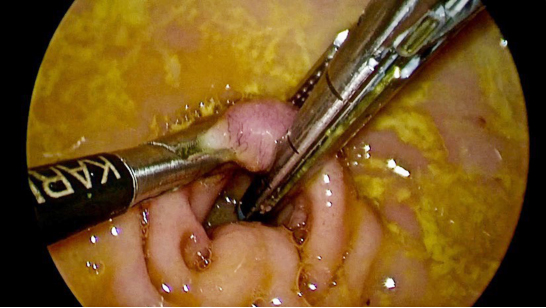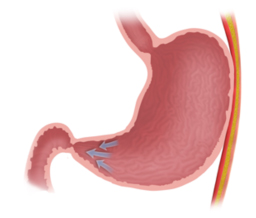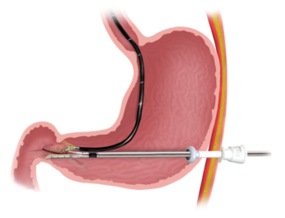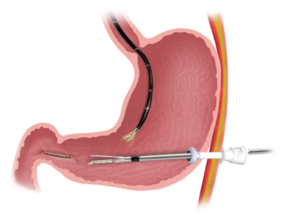What is Gastroparesis?
“A syndrome of objectively delayed gastric emptying of solids in the absence of a mechanical obstruction: Affecting 10% of Type 11 Diabetics (~3 million Americans)”
Symptoms
- Extreme Nausea
- Vomiting
- Bloating
- Weight Loss
- Upper Abdominal Pain
Current Treatment Options
- G-POEM: Only available in academic centers
- Gastric Pacing: Only treats nausea
- Reglan & Gimoti (metaclopramide)
- Cannot be taken more than 12 weeks
- Tardive dyskinesia (involuntary muscle movements) listed as an irreversible potential side effect
- Laparoscopic Pyloroplasty
- Requires general anesthesia
- Laborious and difficult for surgeons
- Less than 5% of referred patients accepted by surgeons due to difficulty and risk of complications
Is Surgical Pyloroplasty Effective?
- Early improvement of symptoms in 90–100% of patients
- Improves gastric emptying by 85–96%
- Normalizes radiologic & scintigraphy studies in 54–77%
Based on these results, surgical pyloroplasty should be considered as a primary treatment for gastroparesis. However, it is invasive and carries a high risk of complications.
Swanstrom, Surgical Endoscopy (2018)
Hybrid Endoluminal Stapled Pyloroplasty
 Fig. 6 Hybrid endoluminal stapled pyloroplasty Swanstrom, Surgical Endoscopy 2018
Fig. 6 Hybrid endoluminal stapled pyloroplasty Swanstrom, Surgical Endoscopy 2018



